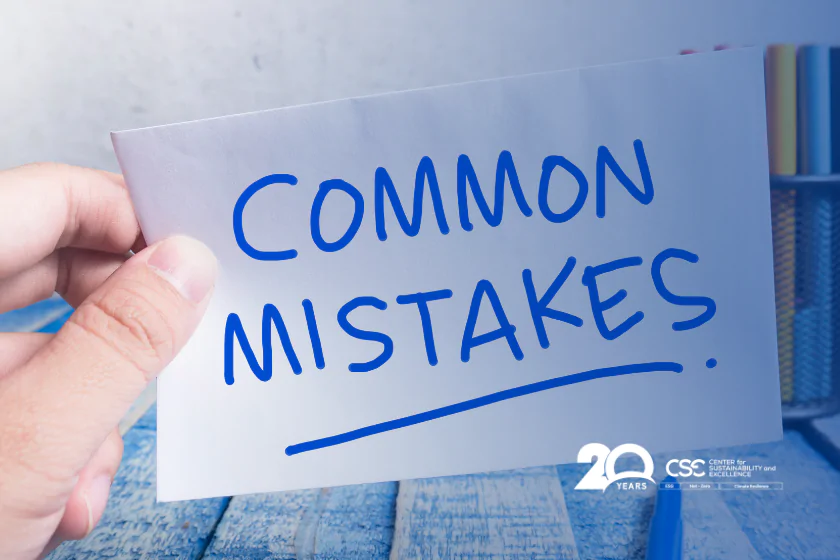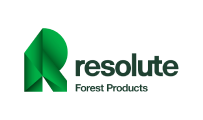In today’s fast-paced ESG landscape, consultants have an unprecedented opportunity to influence corporate sustainability strategies, drive measurable impact, and create long-term value for clients. Yet even experienced professionals can fall into common traps that undermine results and credibility.
Whether you’re just starting your ESG consulting journey or are a seasoned practitioner, avoiding these mistakes can mean the difference between being a trusted advisor and being a “check-the-box” consultant.
Below are the 10 most common ESG consulting mistakes—and practical, proven ways to sidestep them.
-
Treating ESG as a “Compliance-Only” Exercise
The mistake: Focusing solely on meeting disclosure requirements without integrating ESG into a client’s core strategy.
The fix: Position ESG as a lever for innovation, operational efficiency, and competitive advantage. Cite case studies showing companies with strong ESG integration outperforming peers in market value and resilience (e.g., MSCI ESG research). Frame ESG as a growth catalyst, not a checklist.
-
Ignoring Materiality
The mistake: Using generic ESG templates without identifying what truly matters to each client’s stakeholders.
The fix: Conduct a double materiality assessment to capture both financial impacts and societal relevance. Use stakeholder surveys, industry benchmarks, and scenario analysis to ensure the strategy targets the most significant issues—those that move the needle for both investors and communities.
-
Overcomplicating the Process
The mistake: Bombarding clients with jargon and complex frameworks they don’t understand.
The fix: Translate ESG concepts into simple, actionable steps, supported by visuals like dashboards or heat maps. Use relatable analogies (“carbon footprint is like a utility bill for the planet”) to boost understanding and ownership.
-
Neglecting Supply Chain Impacts
The mistake: Focusing only on a company’s direct operations and ignoring Scope 3 emissions or upstream/downstream risks.
The fix: Map the supply chain to identify hotspots for environmental or social risk—often where 70%+ of a company’s footprint lies (CDP data). Prioritize supplier engagement, sustainable procurement policies, and life-cycle assessments to extend ESG impact beyond the company’s walls.
-
Relying on Outdated Standards and Metrics
The mistake: Using frameworks that are no longer aligned with global best practices.
The fix: Stay aligned with evolving standards—GRI, ESRS, SASB, TCFD, and the ISSB baseline—by setting an annual review of frameworks. Integrate metrics that allow for comparability and decision-usefulness, not just compliance.
-
Overlooking Stakeholder Engagement
The mistake: Developing ESG strategies in isolation from those most affected.
The fix: Design structured engagement processes—focus groups, public forums, investor briefings—that capture diverse voices and identify potential resistance early. Evidence shows that companies with strong stakeholder trust have 20% higher long-term performance (Harvard Business Review).
-
Underestimating Data Quality Challenges
The mistake: Accepting unreliable data without verifying accuracy.
The fix: Build a data governance framework that includes verification protocols, clear ownership, and technology solutions like automated data capture. Ensure ESG data is audit-ready—this protects credibility and enables confident decision-making.
-
Failing to Link ESG to Business Outcomes
The mistake: Presenting ESG efforts without showing how they impact the bottom line.
The fix: Tie each ESG initiative to a clear financial or strategic metric—revenue growth, cost avoidance, market share, or brand equity. For example, quantify the savings from energy efficiency or the sales uplift from sustainable product lines. This turns ESG from “nice to have” into a profit enabler.
-
Skipping Change Management
The mistake: Delivering recommendations without ensuring organizational buy-in and capability building.
The fix: Pair ESG strategy with internal training, leadership alignment workshops, and incentive structures. Use change champions in each department to embed ESG into daily operations and ensure adoption sticks beyond the consulting phase.
-
Not Investing in Your Own Professional Development
The mistake: Assuming that your current knowledge will keep you competitive.
The fix: Commit to continuous learning—at least one ESG certification or advanced course per year. Engage in global ESG networks, attend sector-specific conferences, and subscribe to regulatory update bulletins so your advice remains ahead of the curve.
How to Avoid All 10 Mistakes – and Excel as an ESG Consultant
Avoiding these common pitfalls is more than a matter of professional pride—it’s a competitive advantage in a rapidly evolving market. Clients today expect ESG advisors to combine technical expertise with strategic foresight, clear communication, and measurable results.
To deliver that level of impact, you need more than awareness of the issues—you need tools, frameworks, and practical know-how you can apply from day one.
That’s where the Certified Sustainability ESG Practitioner Program – Consultants Edition comes in. This advanced training is tailored for professionals who guide clients through ESG challenges and opportunities. You’ll gain:
- Up-to-date mastery of global ESG reporting standards and frameworks (GRI, ESRS, SASB, TCFD, ISSB).
- Hands-on experience with double materiality assessments, stakeholder engagement, and supply chain sustainability.
- Proven strategies for linking ESG to business value, improving data quality, and embedding change.
- Real-world case studies from leading organizations across sectors.
By the end, you won’t just avoid these 10 mistakes—you’ll be equipped to deliver high-impact, future-ready ESG consulting that earns client trust and drives tangible outcomes.
Position yourself as a trusted, high-impact ESG advisor.
Register here via Oveit and take the next step in your ESG consulting journey.







